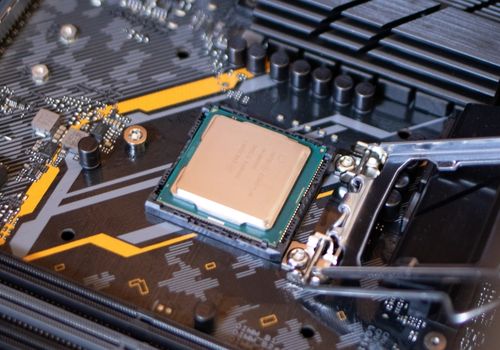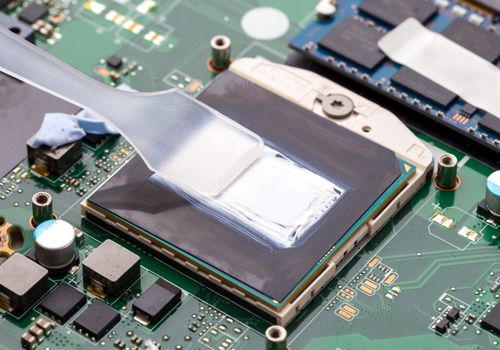
Unlike with a desktop motherboard, a laptop's CPU is usually soldered into place. Even if you're an expert, it'll take a lot of work to remove and attach a new processor.
As an avid gamer, I've upgraded the processor on my gaming PC a bunch of times to boost its performance. A friend of mine recently asked me whether she could do this on her laptop since it was running slow. I told her how laptop CPUs are mounted differently than desktop processors, and that she couldn't really do this.
If you'd like to learn more about this, keep reading. I've run through some additional information on your laptop's processor.
Contents
Generally speaking, you can't upgrade your laptop's processor. It usually is soldered onto the motherboard, which means that you'll need a lot of skill and time to remove it.
You might be wondering why you can't just upgrade your CPU with your motherboard. However, this is not that easy. Laptop motherboards are not like desktop ones - they lack uniformity, so finding a replacement chip will be difficult.
If you take a look at the soldering on your processor, you'll see small solder balls underneath it, with solder pads on top. This specific mounting technique is called Ball Grid Array (BGA).

Almost all laptops use BGA, but there's a chance that yours came with the Land Grid Array (most common in Intel desktop CPUs), or Pin Grid Array mounting types. You can swap your laptop CPU out with these two socketed CPU types.
It's easy to figure out whether your laptop is using BGA, PGA, or LGA surface mounting. Simply find your processor name, then do some research on it online. Here's a breakdown:
Apple also solders processors onto the motherboard, if you're wondering about Macbooks. They solder a bunch of parts to it, including the graphics card, RAM, and SSD.
Before I explain how you can upgrade your processor (if you have one that isn't soldered in place), be mindful of the processor you're trying to upgrade to. It might have a high thermal processor power, and emit a lot of heat. This can ultimately cause thermal throttling.
Why is thermal throttling so bad? It not only causes your CPU power consumption to slow down but can also cause your laptop battery life to die.
In general, the more powerful the CPU, the higher its thermal design power - the Intel Core i5-3210M has a 35 W TDP, while the Intel Core i7-3630QM has a 45 W TDP.
With that out of the way, here's how to do a CPU upgrade:
Check the tutorial at the bottom for more detailed instructions.
There are many reasons why manufacturers solder processors together instead of making them replaceable.
Let's take a look at them.
When a laptop's parts are soldered together, there are fewer components needed to keep them in place. This, in turn, creates more space. So, you will get a slimmer device, which is what most people want these days.
Soldered parts can be assembled with a machine, while replaceable parts have to be fitted into slots manually. This not only makes the mounted components easier to assemble but also more affordable to do.
Replaceable parts are either slotted in or connected using wire. Both can break, so you'll have to worry about an additional point of failure with them.
Apart from changing your laptop's processor, there are a few other ways to improve its performance, like upgrading your RAM and SSD.
Let's talk about them.

Installing more RAM is one of the best ways to make your laptop faster. The RAM acts as its temporary memory and enables apps to store data. So, the more RAM you have installed, the faster the apps will be able to store and retrieve data. This, in turn, can make your operating system snappier.
RAM sticks aren't always soldered into place. You should be able to swap them out whenever you want. However, in case they have been mounted, here's how you can check:
If you see the SODIMM, that means your computer's memory can be swapped out. However, you're not out of the woods yet.
RAM sticks are not backward compatible with each other. If you're not careful, you could end up buying one from the wrong generation, like DDR4 for DDR2. You won't be able to use the one you bought if this is the case. Check out my other guide to learn more.
Once you get your hands on the appropriate RAM, this is how you install it:
Most modern laptops come with SSD drives, but there's a chance that yours doesn't. Even if there is one, you can swap your SSD drive to a larger option. You'll get faster boot times, and an all-around snappier performance.
First, make sure that you get your hands on the right SSD drive. You should be particular about its size and capacity. This detailed guide can help you out.
Once you get a proper drive, here's how to install it:
Most laptops come with their CPU soldered onto their motherboard. So, you can't really upgrade them, since they use the FGA mounting technique.
In the rare instance that your laptop uses any other surface mounting type, you should be able to remove its processor. To check whether this is the case, you'll have to find out what version your laptop's motherboard is and google its socket specifications.
I also looked at whether upgrading your laptop's CPU is a good idea. You might want more processing power. However, the processor upgrade could cause your PC to slow down instead of allowing you to reach higher clock speeds, as the TDP might be too much to handle.
